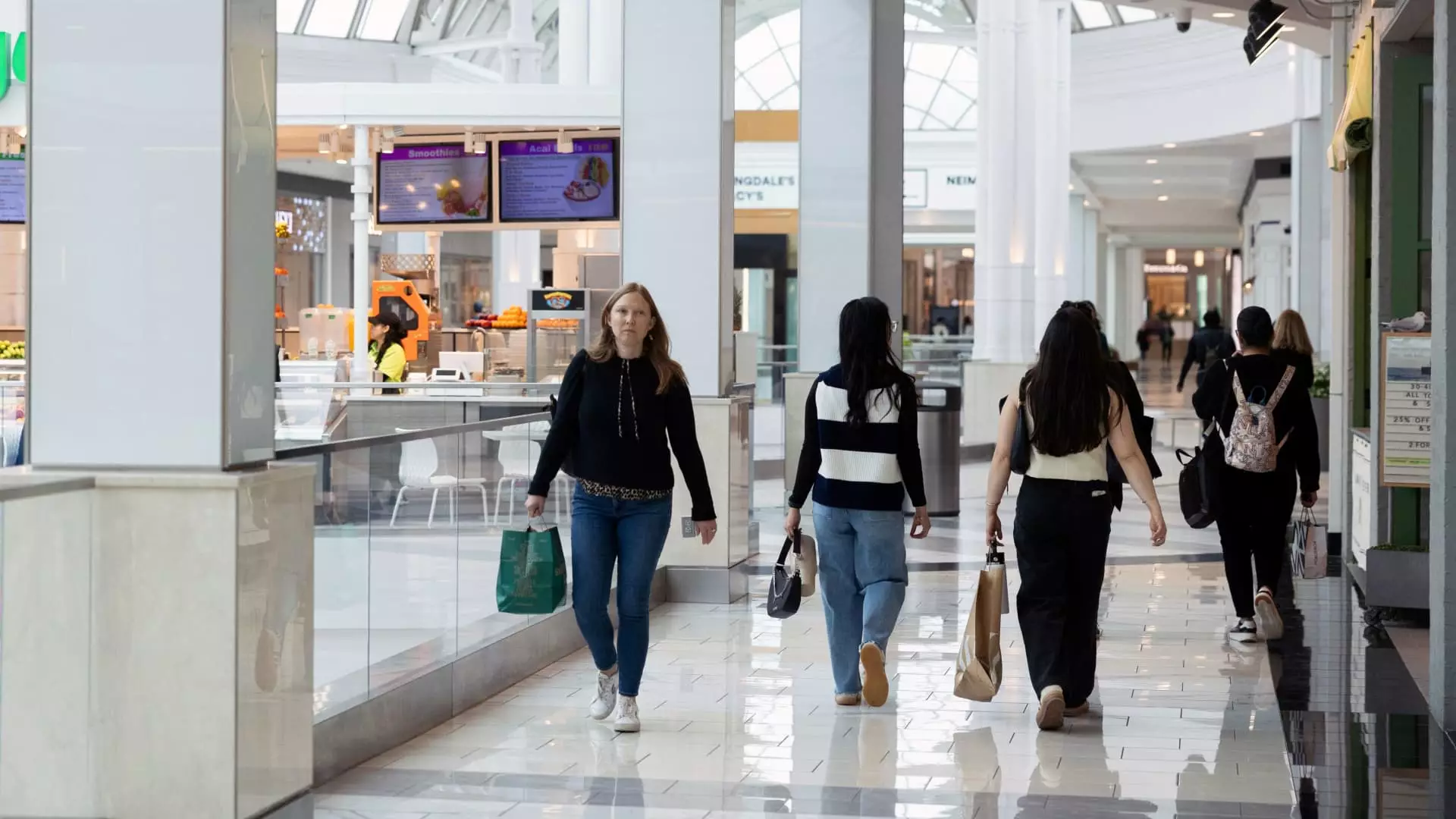As we enter 2025, the American economy appears to resemble a surreal duality: while wealthier consumers bask in the glow of luxury, those in lower-income brackets are suffocating under the weight of financial constraints. This divide is not merely anecdotal or a consequence of recent economic fluctuations; it’s a pronounced reflection of the deep-rooted issues plaguing the nation. Credit card companies’ Q1 reports reveal a telling narrative: lower-income earners are meticulously budgeting and restricting expenditures to essentials, whereas the affluent are indulging in luxuries like upscale dining and extravagant travel. Amid President Donald Trump’s trade policies and rising inflation, anxiety looms, with the once-optimistic consumer sentiment starting to wane.
The Burgeoning Strain on Financial Tightrope Walkers
The data speaks volumes. Companies like Synchrony, which specializes in store credit cards for retailers such as Lowe’s, show a troubling 4% drop in spending among lower-income users, a demographic struggling to keep its head above water. This is in stark contrast to the affluent consumers who seem oblivious to the financial turmoil surrounding them, with American Express reporting a commendable 7% increase in dining out and an 11% uptick in luxury air travel. Such a clear divide raises serious questions about the sustainability of constant discretionary spending at the top while those at the bottom grapple with their mounting financial burdens.
This gap is further manifested in credit card usage patterns. The Philadelphia Federal Reserve revealed that 11.1% of credit cardholders now make only minimum payments—the highest rate seen in over a decade. The shift toward living paycheck to paycheck is no longer confined to the fraying edges of society, but it now embodies a significant segment of the consumer base, signaling a potential crisis that could shatter the fragile economic veneer.
Affluent Consumers: Insulated from Turmoil
It is critical to understand the psychological ramifications of this consumer bifurcation: while the broader economy may seem “in pretty good shape,” lower-income earners are increasingly selective about where they spend. As Synchrony CEO Brian Doubles pointed out, there has been an almost palpable retreat from discretionary spending that began last year as inflation consumed purchasing power.
This disconnect between the wealthy and the rest underscores a troubling trend: those with substantial credit and economic cushioning remain insulated from concerns regarding tariffs, inflation, or even recession threats. Analysts like Brian Foran at Truist aptly noted that while consumers at the top continue to spend, those lower on the economic ladder face considerable obstacles that profoundly influence their purchasing behaviors. This unseen stress threatens to catalyze a broader economic downturn, which could likely have splintering effects on businesses that depend on discretionary spending.
Shifting Consumer Preferences: A Temporary Adaptation?
Recent reports indicate a keen shift in consumer behaviors, especially from those grappling with limited budgets. Instead of venturing freely into the realm of non-essential goods, lower-income individuals are gravitating toward electronics and home necessities. Bread Financial’s CFO Perry Beberman mentioned an observable trend of consumers questioning their decisions to invest in luxury items like televisions, a red flag suggesting that the current boost in spending may not translate into sustainable long-term demand.
This emerging pattern of cautious buying not only affects the consumer landscape but also reflects the psychological toll economic uncertainty has on our society. Families are evaluating their decisions and weighing the consequences of broader inflation on their everyday lives. Adapting to this new reality by pivoting to essential goods could offer temporary relief, but this shift risks stifling growth in various sectors, particularly hospitality and luxury goods.
The Warning Signs Ahead
As we navigate through 2025, it becomes increasingly vital to recognize and address this unsettling divide. The ongoing trend of credit card companies thriving on affluent clientele may not be a sustainable model in the long run, particularly as lower-income earners retreat further into financial precariousness. It’s crucial for policymakers to recognize these disparities and prioritize mechanisms to bridge the widening chasm. The need for a balanced economic strategy has never been more evident, ensuring that growth and prosperity are shared, rather than a privilege of a select few. Ignoring this looming crisis is not just irresponsible; it runs the risk of destabilizing the very foundation on which our society is built.

